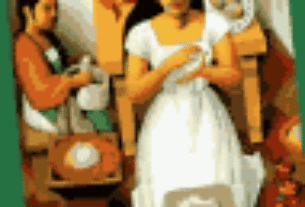In a Village Far From Home: My Life Among the Cora Indians of the Sierra Madre
By Catherine Palmer Finerty
University of Arizona Press Paperback, 2000
Available from Amazon Books: Paperback
I borrowed this book from a friend who borrowed it from a friend. And when I was finished I immediately started recommending it to other friends. It’s that kind of a book. I guess well-written personal adventure stories have that effect on us – and this is a good example of the genre.
Catherine Finerty seems a rather unlikely person to have written a first-person account of the eight years she spent in a primitive Indian village in Mexico. She had previously spent all her working life in Manhattan as advertising manager with Helena Rubenstein, vice president of an ad agency, beauty editor of a popular fashion magazine and copy-group head of a well-known New York ad agency. She quit her career shortly after the death of her husband but none of the more usual retirement locations in the U.S. appealed to her. Still in her early 60s, the challenge of Mexico seemed more attractive so she drove to Guadalajara to live. She felt that learning Spanish and possibly teaching English would help fill her time.
While living in Guadalajara, Ms. Finerty became acquainted with some Franciscan priests and also with some Huichol Indians who were associated with the Franciscans. Eventually she was invited to visit a Huichol village about a thirty minute flight from Tepic, high in the Sierras in Western Mexico. The only other way to reach this community — Jesús María — was by taking an eight day mule ride. The village wasn’t even marked on the map.
It was also the kind of place with no running water or electricity and more than its share of disease, unbearable heat and bugs. One slept on boards raised up on rocks or gasoline containers. Clothing was washed in the local stream.
There was a government Health Center in Jesús María that housed a medical school graduate who was doing a required year of social service before starting his career. There was also a permanent male nurse. Ms. Finerty became associated with the clinic and soon found herself boiling hypodermic syringes, massaging swollen knees with peyote and alcohol and cleaning and bandaging wounds. She admits to a predisposition to medical practise so that little by little she found herself enlarging her scope of activities until she was giving shots, dispensing antibiotics, treating diseases such as dysentery and typhoid. Then, in one particular month, she found herself the only médico in the town — not just Jesús María but the surrounding area, too. She describes it as “a month of suppressed terror”.
“On the wall of the clinic, ” she says, “I pasted a chart I had prepared from the book a doctor had prescribed. It showed the symptoms of simple diarrhea, salmonellosis, shigellosis, amoebiosis and typhoid fever. It also showed the remedies for each, milligrams of medicine to kilograms of body weight.”
She relied on these charts and the medicines that were available and, as she says: “Not a single baby died, nor any child or grown-up. I was hooked.”
She obviously found her role personally fulfilling because later she writes: “It isn’t every day that a person past retirement age gets a chance to take care of the sick and hurt and see them get well.”
I shouldn’t give the impression that Ms. Finerty’s book is only about medical practices and the treatment of illnesses. We are also given exact and loving descriptions of rites and ceremonies at Easter and Christmas and the Day of the Dead, as well as birthdays, weddings and the special coming-of-age ceremonies that fifteen year old girls celebrate in Mexico. Because of the background all are unusual mixtures of Christian and Indian approaches to these festive occasions. It’s interesting to see the ways in which two wholly different sets of beliefs have somehow become molded to each other. And they are all are observed keenly by Ms Finerty. She became completely accepted by the Indians in all the villages where she served and her story provides numerous anecdotes about her relationships with the people, who she definitely came to love.
“Somebody should write a book about this place,” she observes at one point.
“There can’t be another like it on the map.” She mentions taking her typewriter with her whenever she travelled far and one wonders if writing a book wasn’t in her mind when she went to Jesús María in the first place. Anyway, rest assured the book has finally been written and this is it.
In my humble O: Good one! Buy a copy. Then pass it on to a friend.

